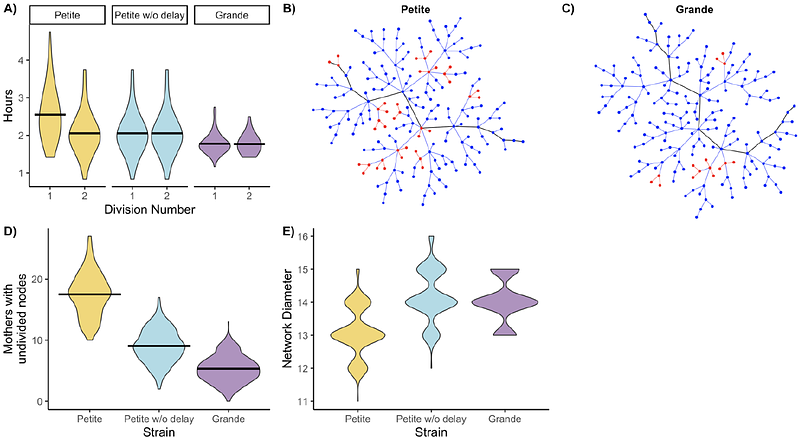Emergence of coordinated cell division during the evolution of multicellularity

Emergence of coordinated cell division during the evolution of multicellularity
Cedeno Perez, L. F.; Pineau, R.; Day, T. C.; Ratcliff, W. C.; Conlin, P. L.
AbstractThe evolution of multicellularity represents one of life\'s major evolutionary transitions, fundamentally transforming how natural selection operates on living systems. While multicellularity has evolved repeatedly, we lack a mechanistic understanding of how cellular traits translate into novel multicellular phenotypes. Using the Multicellularity Long-Term Evolution Experiment (MuLTEE), we combine time-lapse microscopy and single cell tracking to reveal how age-specific cell division timing shapes multicellular topology. We discovered that the anaerobic ancestor divided asynchronously with a 25% longer first division, while the aerobic ancestor divided synchronously. Through computational modeling, we demonstrated that this first division delay, rather than increased variance in doubling times, drives asynchronous division patterns. Using graph theoretical and biophysical models, we showed that this delay creates smaller groups by altering network morphology and concentrating mechanical stress around older cells. Synchronous cell division provides both cellular and group-level benefits through faster growth and larger size, suggesting multiple selective pathways for its evolution. This trait proved remarkably stable in our experiment, emerging by day 200 and persisting through day 1000. Furthermore, we revealed how developmentally-programmed division timing could theoretically produce even larger groups. This research illuminates a fundamental principle in multicellular evolution: simple changes in cellular behavior can create emergent effects that reshape multicellular organization, providing insight into how major evolutionary transitions proceed through the modification of cell-level traits.